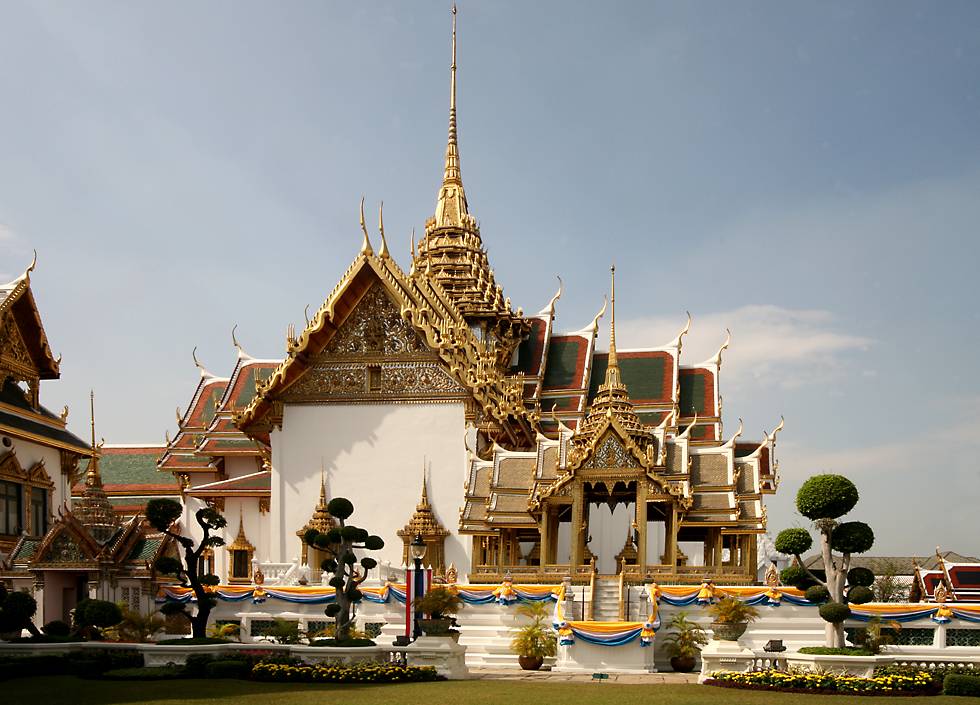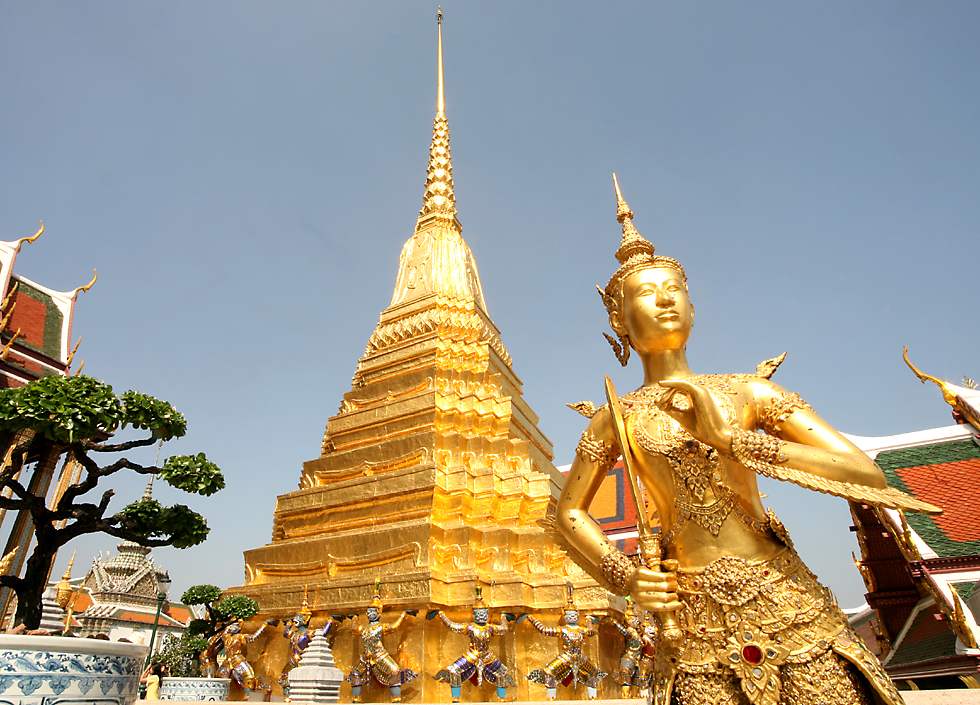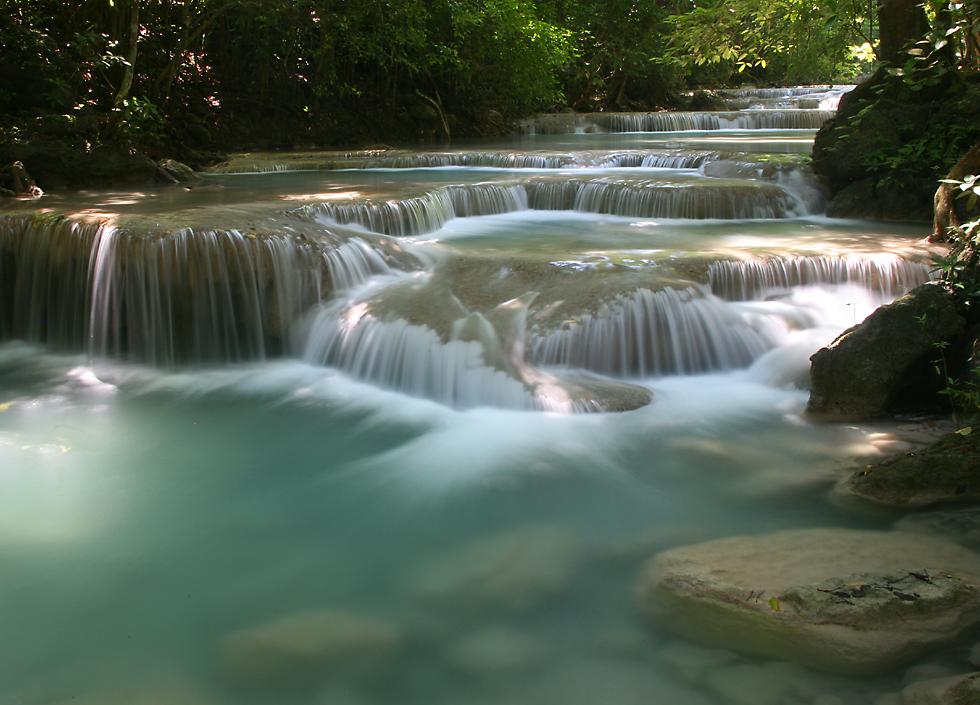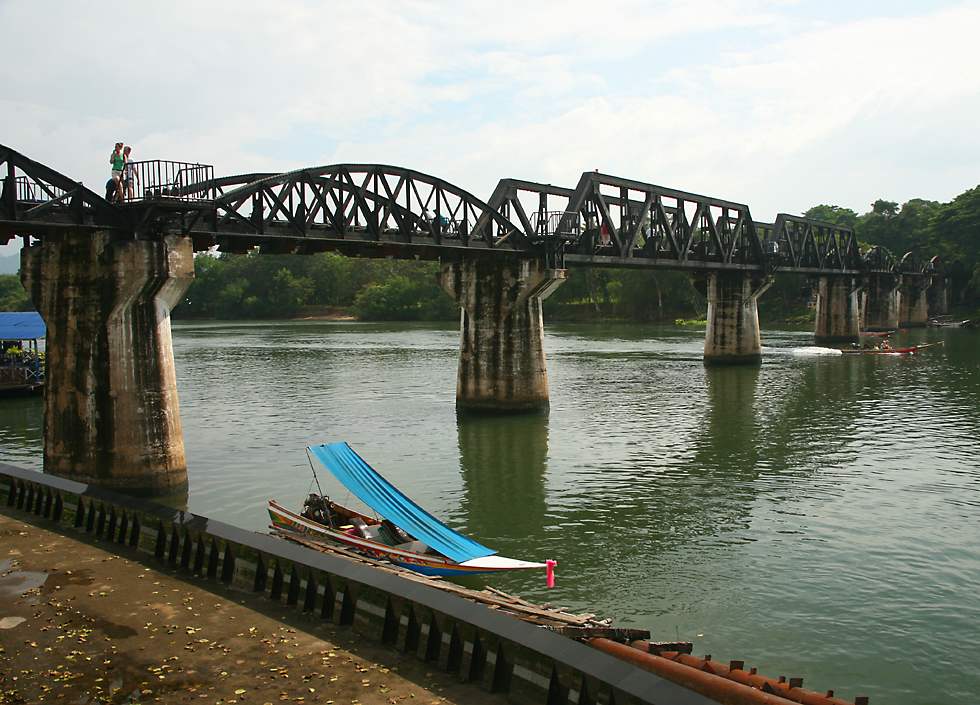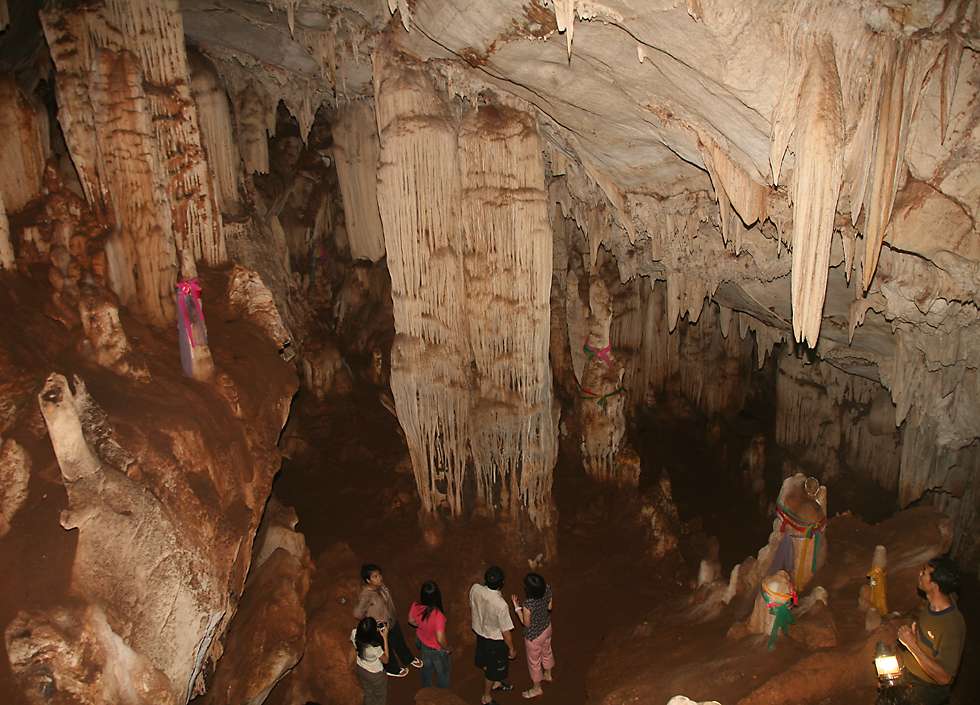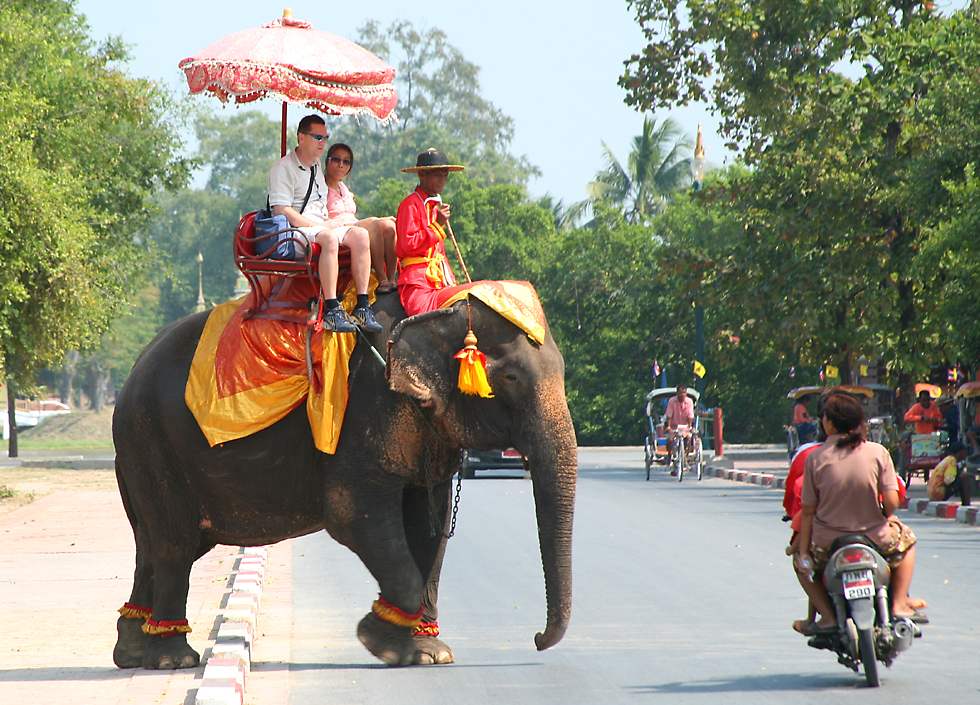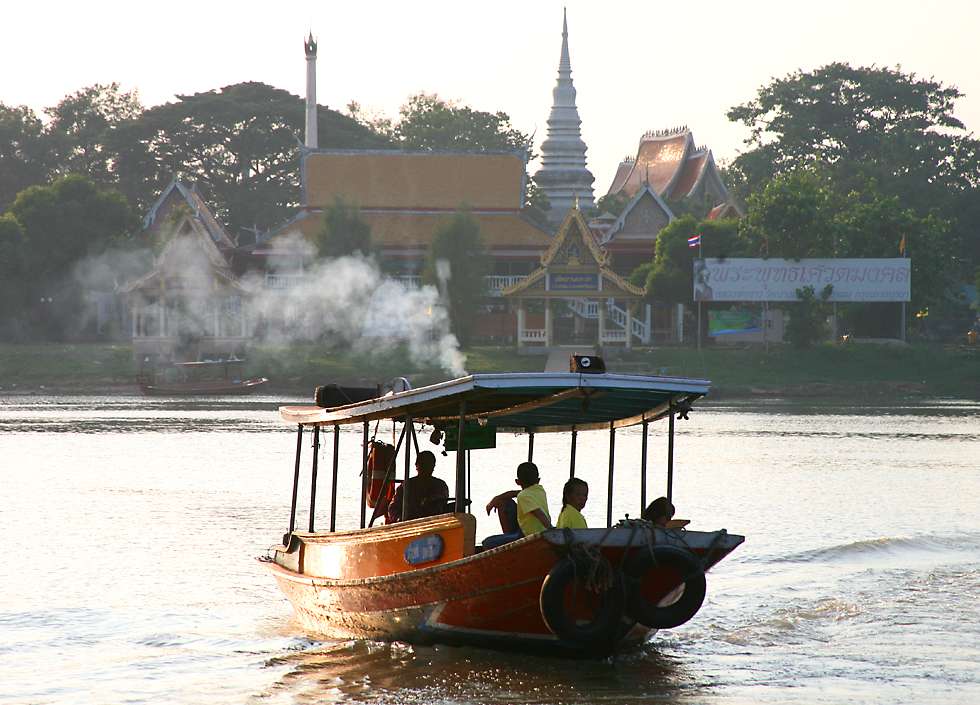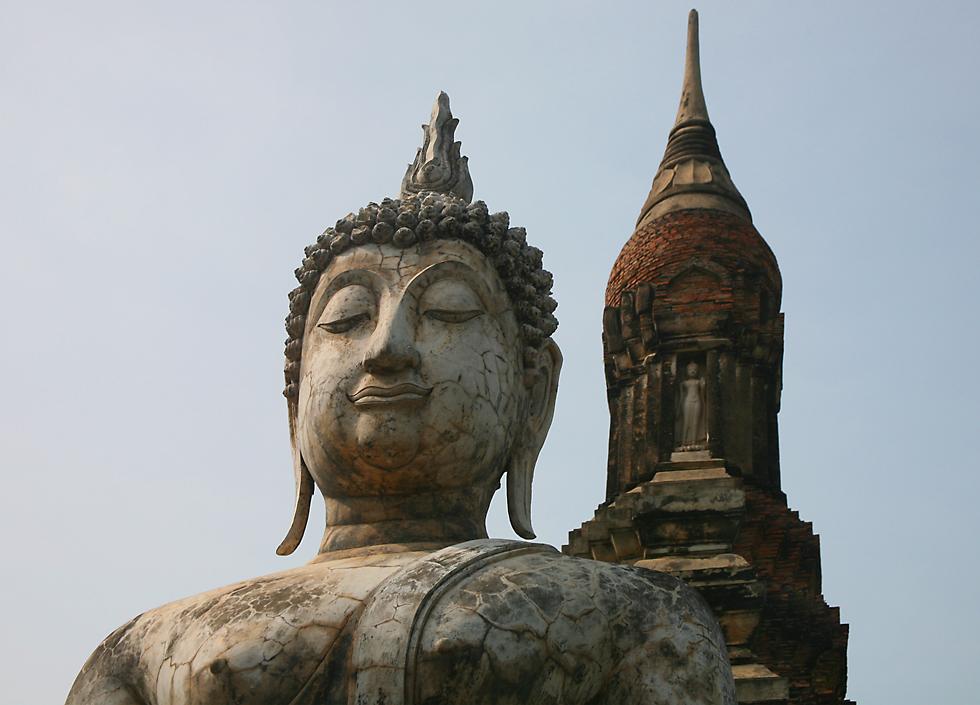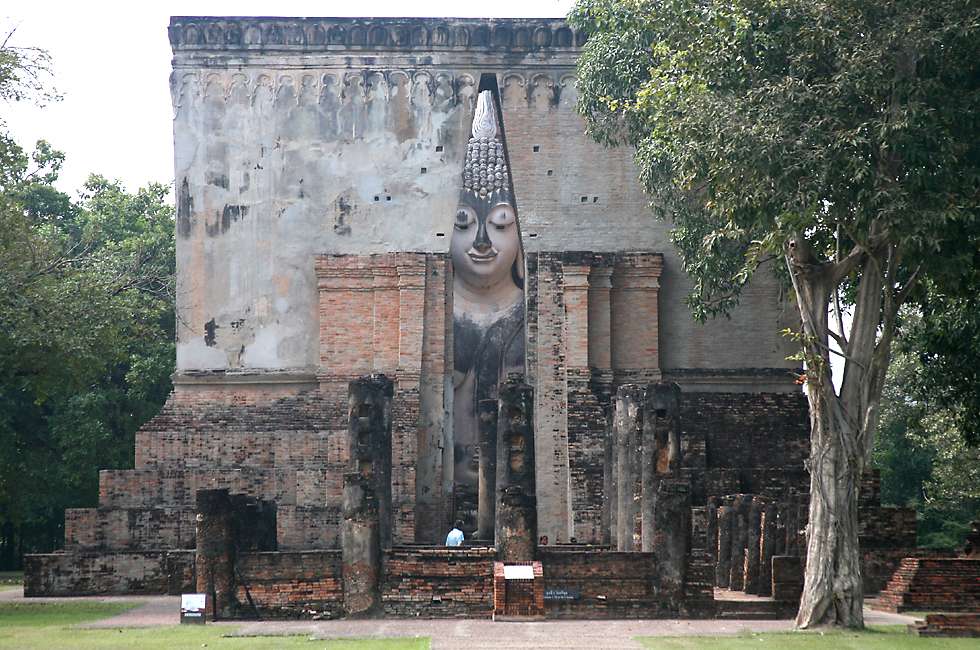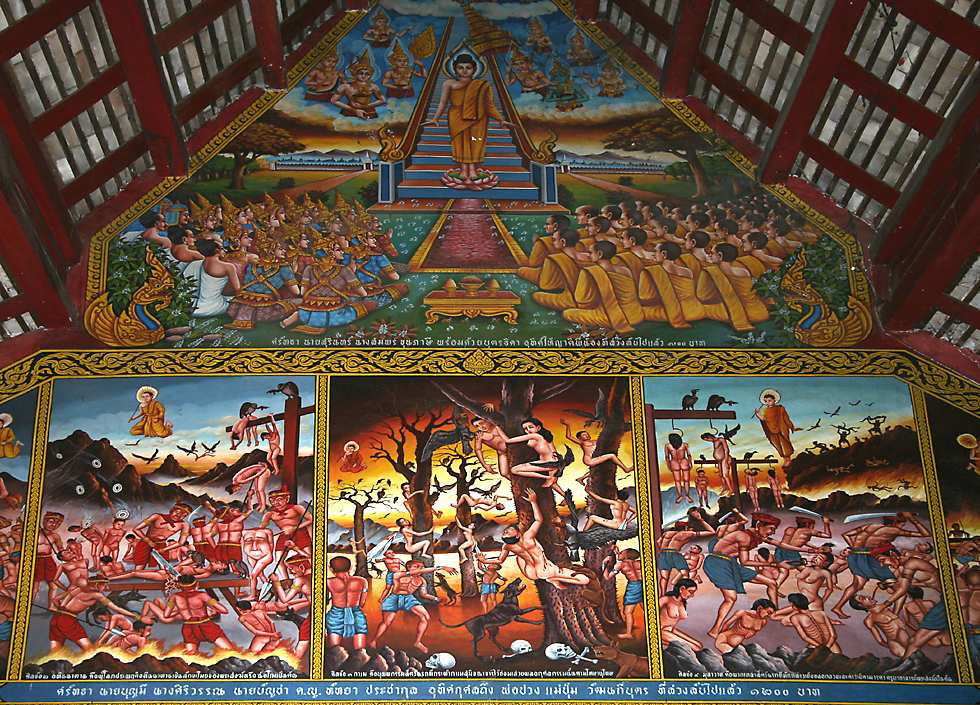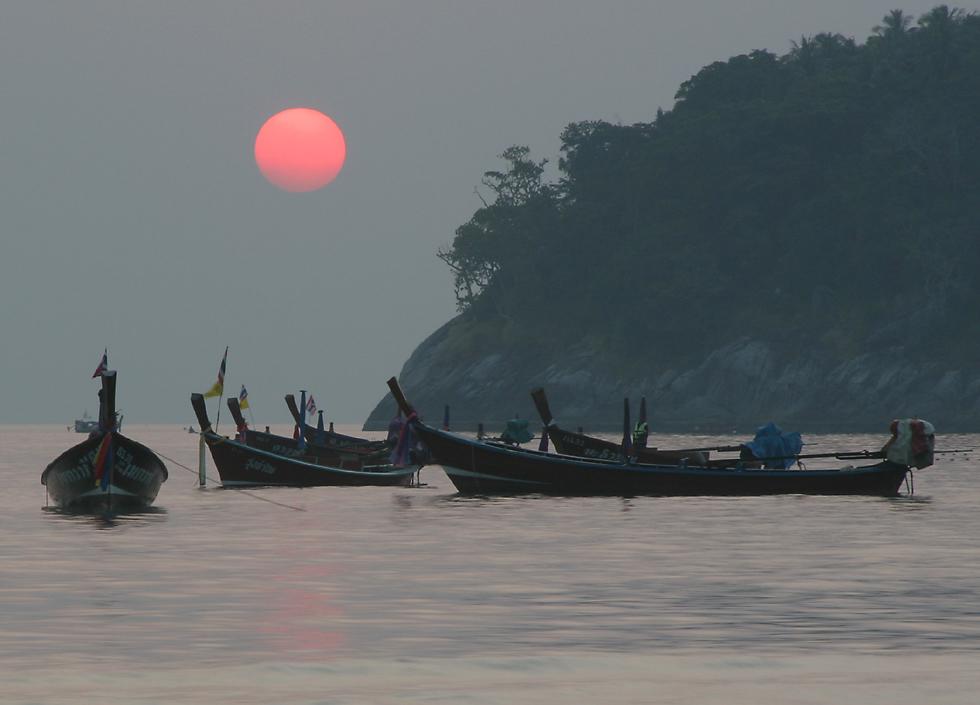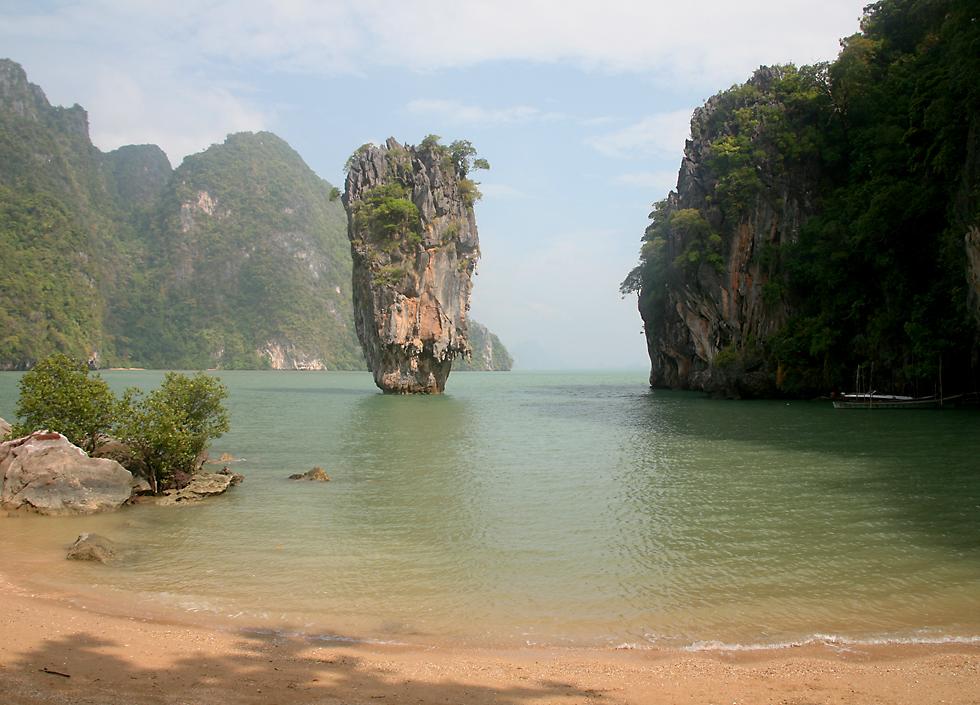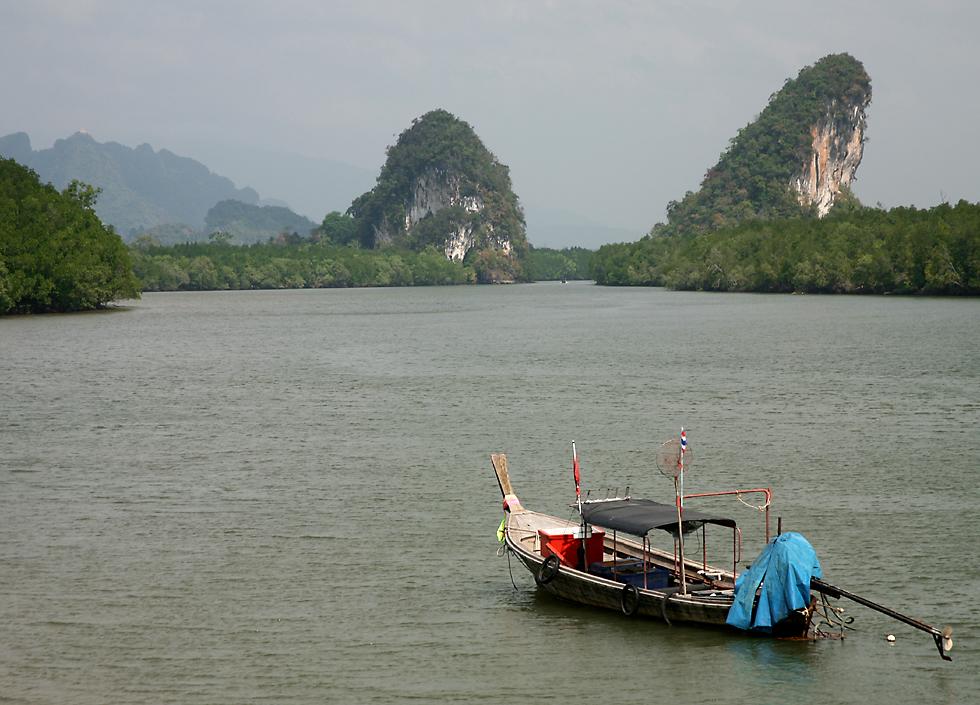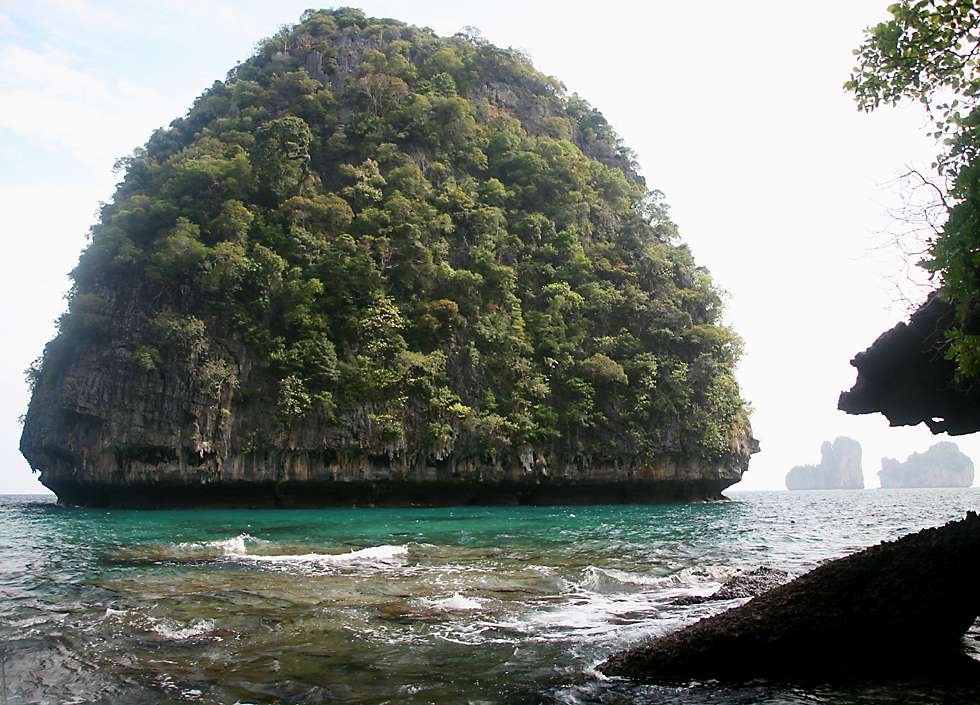Highlights of Thailand

In case you hadn't already noticed, Thai palace and temple architecture tends very much towards the ornate. This is a side entrance to Prasat Phra Dhepbidorn, usually translated into English as The Royal Pantheon. It's only open to the public on one day of the year, which wasn't the day I was there, but I'm told that it contains statues of kings of the current Chakri dynasty. |
|
Here's Prasat Phra Dhepbidorn from another angle, with two large golden stupas on the right and hidden away on the left Phra Siratana Chedi, a stupa said to contain relics of Buddha. |
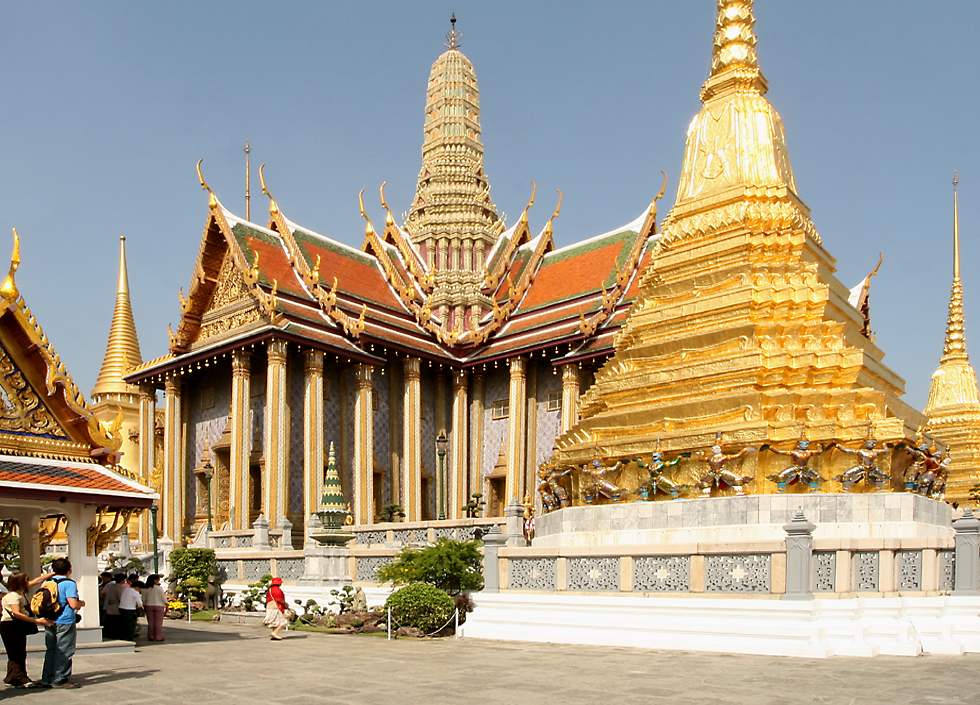
|
|
Wat Phra Ram contains a very large prang or tower, it's not certain who built it, but some historians think that it was the cremation site of King U Thong the founder of Ayuthaya. |
 |

If you want to see unruined temple architecture, then the northern city of Chiang Mai is the place to go. Within the city walls and its surrounding moat there are about 120 temples, about the same number as Bangkok, but most are older and are concentrated within a much smaller area. Although some of these temples are more famous than the others, you'll find interesting things everywhere, just by walking along any footpath within the city and walking into every temple you find. This photo shows one of the lesser temples, Wat Sum Pow, which has examples of the same eye-catching and exuberant architectural and sculptural motifs of the more heavily-trafficked sites. |

I visited a lot of temples during my three and a half weeks in Thailand, but I also made sure to spent a lot of time in the national parks, visiting eight on land in addition to the two marine parks. I also stayed in the parks, either in bungalows or in tents which I rented at the park together with bedding. Staying overnight allowed me to go out on numerous long night-time expeditions along paths in the jungle, which is when much of the most interesting wildlife can be seen, including snakes, frogs and even sleeping birds and butterflies. The waterfalls in this photo are in Khao Phanom Bencha national park, which isn't visited much by foreign tourists because of the lack of transportation - though the Lonely Planet guidebook's statement that "it doesn't offer any lodging or eating options" is incorrect. Along with Erawan and Nam Nao, this was one of the most productive places for me in terms of wildlife, with lots of great insects and even a couple of different lizards which got angry at me, one hissing and the other harmlessly striking me with vegetarian teeth. I'd normally put several wildlife photos on a country's "highlights" page, but in this case I've already gone overboard with more than the usual number of photos of temples and scenery, so I've set up a separate Wildlife of Thailand page! |


